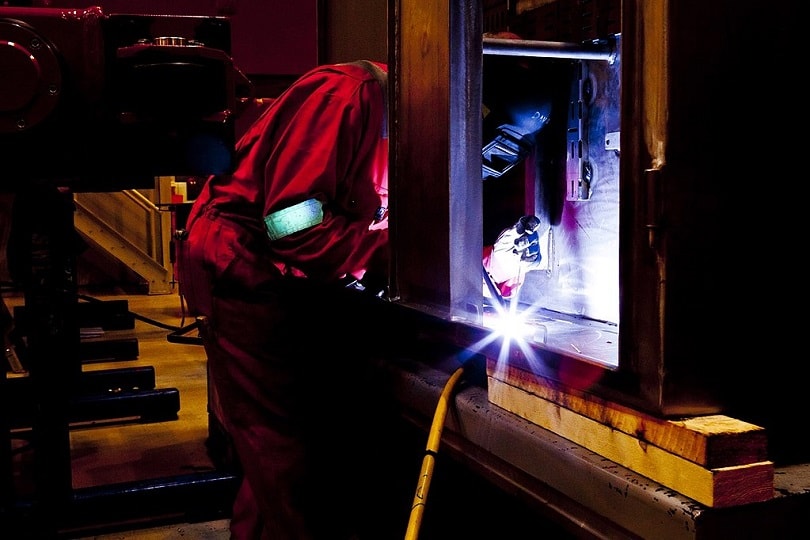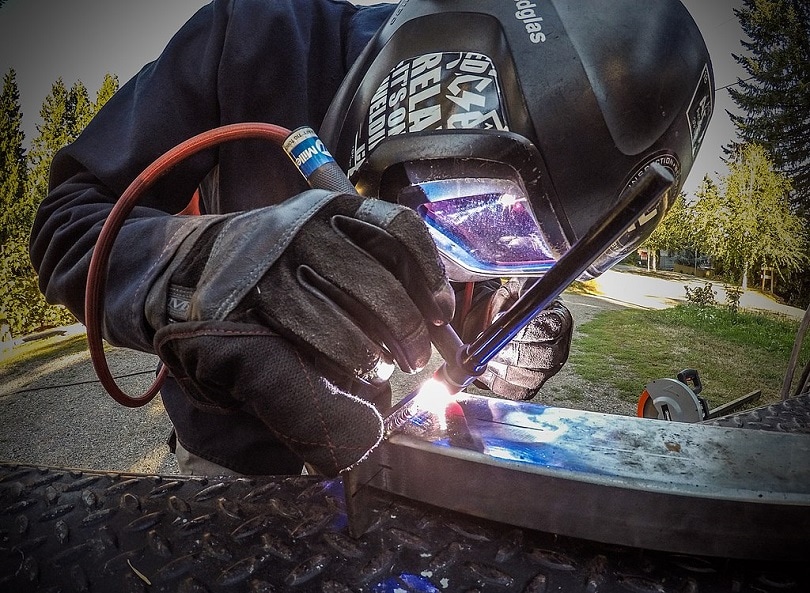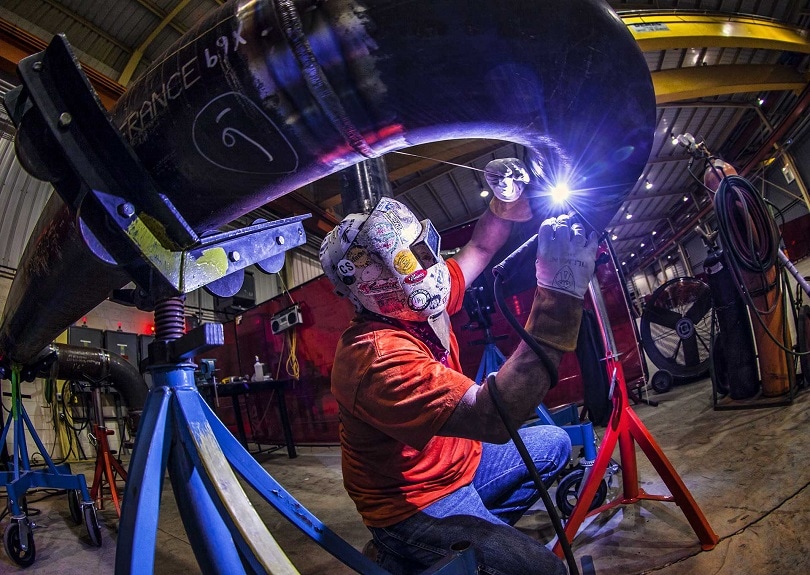Why is Argon Used in Welding, and What Is It? 2025 Guide
Last Updated on

Introduction
Some of the most popular welding processes, especially TIG (Tungsten Inert Gas) utilize a gas called Argon. It is also used in MIG (Metal Inert Gas) welding. In MIG welding it is often combined with carbon dioxide in a gas mix for the shielding gas. While MIG welding is technically possible without argon in the mix, these days TIG welding would not be possible without a gas like argon.
The root of the word will tell us more about what it is. Argon comes from the Greek word, argos, which means “slow” or “inactive.” Another way of saying this is that the gas is “inert.” Argon is a chemical belonging to a group known as noble gases. Noble gases are typically odorless, colorless, and monatomic. Argon certainly fits this description. But the one thing about noble gases that makes argon ideal for welding, is the fact that it has a property of relatively low chemical reactivity unless it is put under extreme conditions. It can also help prevent oxidization. You might hear some old-timers call TIG welding Heliarc. This is because once upon a time the most popular shielding gas for TIG welding was Helium, another noble inert gas.
Why is Argon Used in Welding?
Since argon has a low chemical reactivity, this means that it can function as a gas to push away other gases without itself interfering in the welding process. Argon is also helpful in avoiding oxidization. This is especially helpful for welding TIG, which can suffer even from minor defects.
In MIG welding, it is used in combination with carbon dioxide because it helps stabilize the arc better. A common gas mix is 75% carbon dioxide and 25% argon.
How is Argon Used in Welding?
It functions as a shielding gas. This means that it protects the weld zone and the tungsten electrode from contamination during the process. Imagine the gas being diffused around the surface of the metal and creating an individual atmosphere or ozone layer that insulates the weld from outside contaminants.

The gas is diffused from a gas diffuser attached to the welding gun. The gas diffuser on a TIG gun tends to be larger, and the flow is more direct as opposed to a MIG welding gun (this includes Flux-cored). On a MIG welding gun, the diffuser is set below the nozzle and has holes on the sides, whereas a TIG diffuser or lens tends to be one surface through which gas can flow.
Another difference between the way the gases are diffused is that TIG oftentimes has a pre-flow setting. This means that when the welder hits the pedal, pulls the trigger, or scratches the tungsten to start the arc, the gas will begin to flow even before the arc initiates. The reason for this is that the weld will be contaminated otherwise seeing as its only protection is from the shielding gas. There is also a post-flow that both TIG and MIG utilize. The welder after finishing the weld will sort of ‘hover’ over the last part welded to ensure that it cools properly and without any defects.
Frequently Asked Questions (FAQs)
Is Argon an Explosive?
Since it is not highly reactive, it is not prone to explosion. However, if you puncture a pressurized bottle of argon, the container can explode due to the release of pressure. The biggest safety concern with using argon is ensuring proper ventilation. Since argon is not a breathable gas, it is an asphyxiant like carbon dioxide. Always make sure that you have plenty of oxygen or ventilation.
How Expensive is Argon?
It is affordable enough to be used on a large scale. However, carbon dioxide is cheaper than argon. This is why dual shield flux-cored is most often used with 100% carbon dioxide. Argon is not necessary to run FCAW, but it certainly improves the arc characteristics.

Does Argon Gas Expire?
Since argon is a noble gas and not prone to react with other chemicals it will never go bad.
Conclusion
Sanitary food-grade stainless steel, power plants, refineries, are all things that rely upon TIG welding which would not be possible without argon. The stakes are high with these kinds of projects and argon helps protect these welds from hydrogen, oxygen, and nitrogen, ensuring that the safety of the equipment.
Featured Image: Welder, Wikimedia Commons
